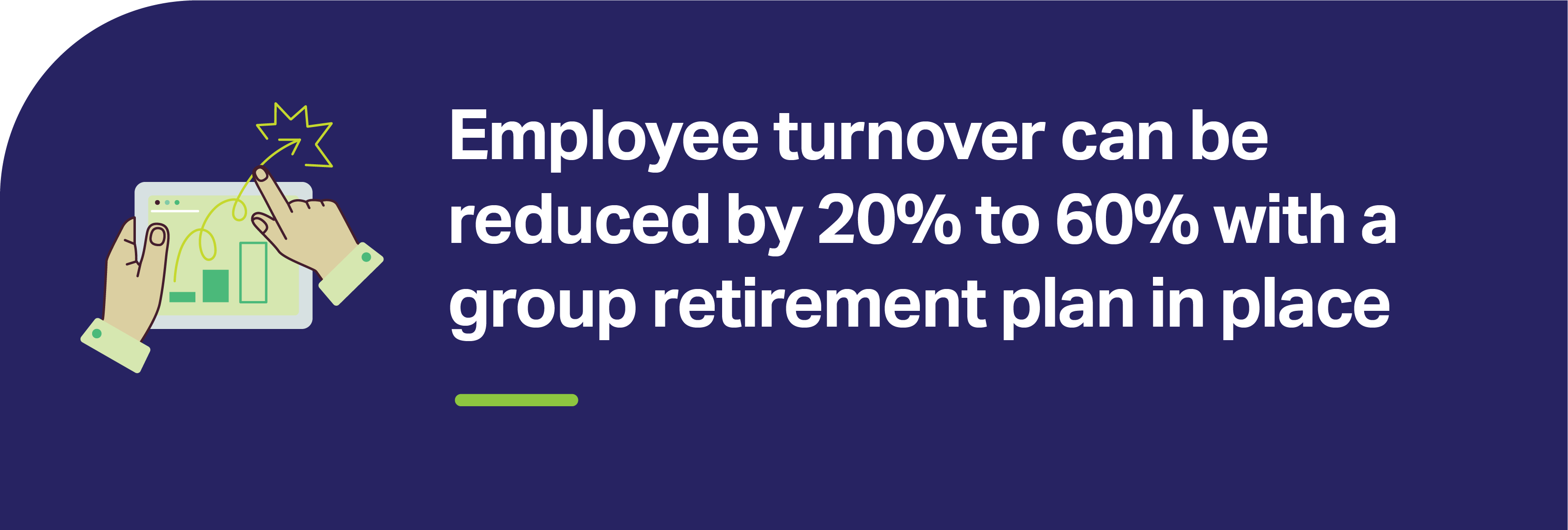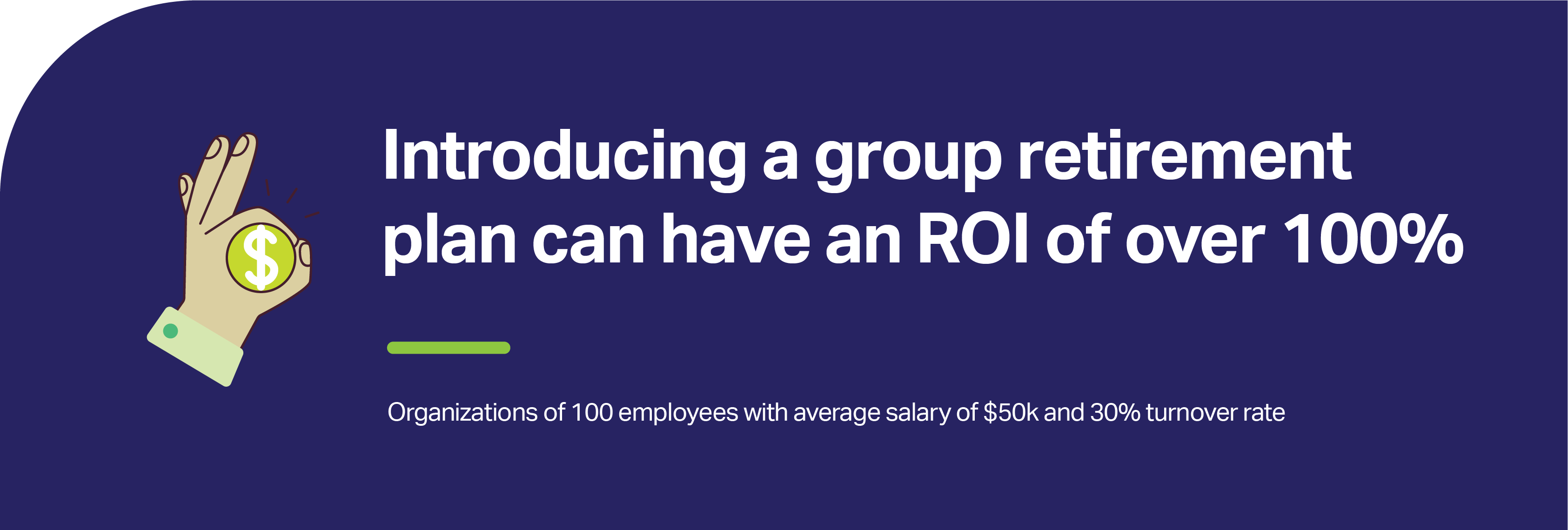
How adding retirements benefits can save you money
With employers under pressure to stay on budget and reduce expenses, it may seem counterintuitive to consider adding a group retirement plan to your employee benefits package. However, research shows that retirement benefits offer a powerful way to help organizations avoid employee turnover costs. So how do you go about calculating the dollars-and-cents ROI of introducing a group plan?
In comparing the likely cost of a retirement plan with the potential savings in reduced turnover cost from having a plan, there are three main parts to this analysis:
- Determining the cost of turnover
- Determining the cost of a new retirement plan
- Estimating the impact of the retirement plan on turnover

The cost of voluntary employee turnover
While organization leaders intuitively understand the pain of valuable employees walking out the door, many have not tried to measure the real impact of employee turnover. Learning just how expensive it can be to lose an employee will help you improve your recruitment and retention efforts. For those who haven’t done this calculation before, the formula for the annual cost of voluntary turnover is:
Cost per departing employee x number of departing employees / year
(i.e., turnover rate x total number employees)
In figuring out the cost per departing employee, you should consider these items:
- Off-boarding costs – knowledge transfer, exit interviews, unpaid vacation, and lost productivity by the departing employee
- Recruitment costs – time to define the new position, job posting and advertising fees, external recruiters, resume screening, interviews, reference checks, hiring bonuses, relocation costs, cost of other candidate evaluations
- Onboarding and training costs – training, management and coaching time by the team to bring the new employee up to speed
- Lost productivity (ramp time) – time it takes for the new employee to become a fully productive member of the team, which can vary widely by role and industry
- Other costs resulting from a resourcing gap – slower client service, delayed product development, increased operational mistakes, and low employee morale during the time it takes to recruit and ramp up a new hire
According to Gallup, these costs can add up to between 50% and 200% of an employee’s annual salary. A 2021 survey of Canadian hiring decisionmakers conducted by The Harris Poll found the total to be about $22,000 per year on average, or about 36% of the average wage. This survey found that per-employee costs increased with company size, with 35% of companies with 100+ employees saying that turnover cost them over $50,000 per employee.
If you are dealing with a workforce with less specialized skills where recruiting and ramp time is lower (weeks not months), you might use a number between 20% and 50% of a year’s salary. If the workforce has more specialized skills and recruiting and onboarding timelines are longer (months not weeks), you might want to use a range of 100% to 200% of a year’s salary.
| Number of employees | 100 |
| Turnover rate | 30% |
| Cost per departing employee | $17,500 (35% of average salary of $50k) |
| Cost of turnover per year | $525,000 |
The cost of a retirement plan
Calculating the cost of a retirement plan considers these elements:
- Employer match costs: Calculate your match using an average participation rate of 70%.
- Setup and administrative costs: Determine the internal costs associated with administering a retirement plan, which can be higher when using a provider without modern technology and payroll integration.
The impact of the retirement plan on turnover
Research indicates having a workplace retirement plan has a significant positive impact on retention. For example, a 2022 study by the US HR tech firm Gusto found that having a retirement plan reduced the risk of quitting by 40% during an employee’s first year. The Center for Retirement Research conducted a 2006 study that revealed offering a retirement plan increased employee tenure by between 2.7 and 5.8 years, depending on the type of plan. This represents a reduction in turnover of between about 34% and about 74%. Through Common Wealth’s research with the Healthcare of Ontario Pension Plan, Canadian employers ranked retirement benefits as the #2 most powerful tool for retention, behind only pay and ahead of things like health benefits, disability insurance, and work-life balance.
You might use a range of 20%-40% reduction in turnover if dealing with a higher-income group, and 50-60% if dealing with a lower-earning group.
The bottom line
| Number of employees | 100 |
| Turnover rate before retirement plan | 30% |
| Cost per departing employee | $17,500 (35% of average salary of $50k) |
| Cost of turnover per year (before introducing plan) | $525,000 |
| Cost of plan (3% match, 70% participation, RRSP/TFSA plan design) | $107,000 ($105,000 for matching, $2,000 for staff time for administration) |
| Turnover reduction from introducing plan | 50% (from 30% to 15%) |
| Turnover cost savings from introducing plan | $262,500 |
| Net benefit (cost) from introducing plan | $155,500 |
| Return on investment | 145% |
The result from this example is more conservative than a similar analysis conducted by Gusto, which showed a return on investment of between 168% and 240% for similar types of employers. Still, there is a significant net benefit and a return on investment of over 100%.

Let’s work together
Get in touch if you’d like support with turnover cost analysis to see how much a group retirement plan can save you.






